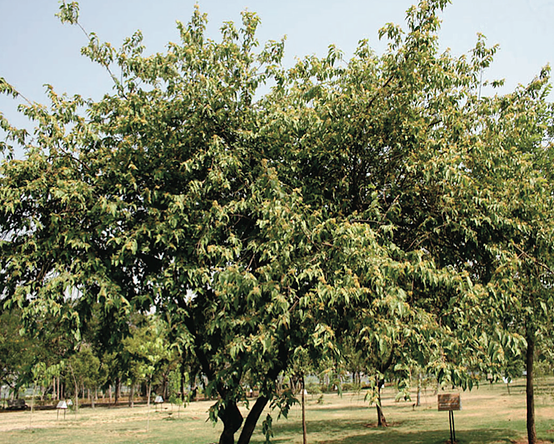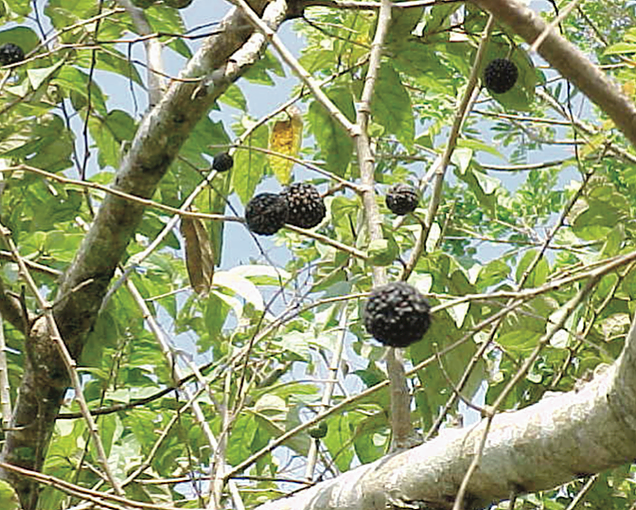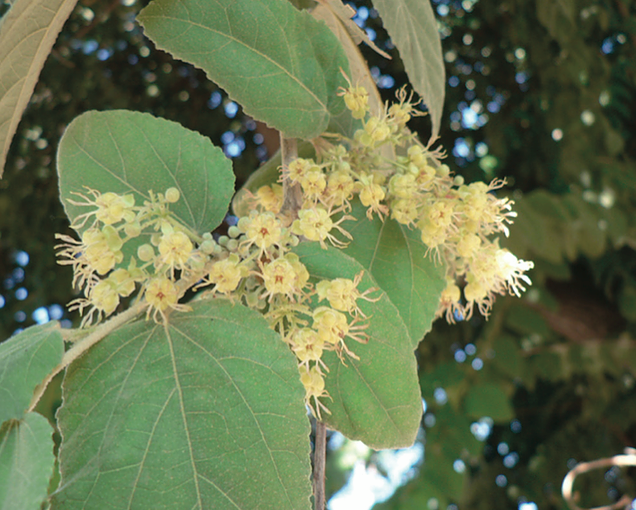

Guazuma Ulmifolia Lam
DESCRIPTION
Shape. Medium tree or shrub, deciduous, from 2 to 15 m (up to 25 m) high, with a diameter at breast height of 30 to 40 cm (up to 80 cm ),usually smaller ( 8 m) . In some cases it develops as highly branched and in others as a monopódico tree.
Cup / Leaves. Open cup, rounded, spreading crown. Alternate leaves, simple; blades 3-13 cm long by 1.5 to 6.5 cm wide, ovate or lanceolate,with serrated margin; dark and scratchy in the beam and green silky greyish yellow and silky on the undersides .
Trunk / Branches. More or less straight trunk, sometimes producing pacifiers, often branched at low altitude (from the base). Widespread long branches, horizontal or slightly drooping . Cortex. External slightly cracked , shedding into small pieces , grayish brown. Internal changing yellowish to reddish or pink , fibrous , slightly astringent sweet brown. Total thickness: 5 to 12
Flowers). Panicles 2 to 5 cm long, small , white and yellow flowers with brown dyes actinomorphic , sweet-smelling , of 5 mm in diameter; downy calyx lobes 2-3 , greenish sepals and petals cream.
Result (s) . Capsule 3-4 cm long, 10 cm in infructescences, ovoid , 5-valvate , opening late, with numerous conical bumps on the surface, dark brown to black when ripe , sweet smell and taste. Remain long on the tree.
Seed(s). Numerous seeds (40 to 80) of less than 1 mm, hard, rounded, brown . The fruits are opened at the apex or irregularly pores
Root: Not available.
Sexuality. Hermaphrodite.

DISTRIBUTION
very abundant species in areas with well-marked dry season or sabanoide vegetated areas or paddocks in almost all the wet warm-area. Altitude: 0-1200 (1500) m.State. . CAMP. COL. CHIS. CHIH. GTO. GRO. HGO. JAL. MEX. MICH. MOR. NAY. OAX. PUE. QRO. QROO. S.L.P. SIN. SON. TAB. TAMPS. VER. YUC.
ORIGIN / EXTENTION
A native of tropical America. It extends from Mexico to South(northeastern Argentina, Ecuador, Peru, Paraguay, Bolivia, Brazil) America and the Caribbean. In Central America it thrives at altitudes up to 1,200 m, most frequently below 500 m, in regions with dry season.
HABITAT
It is characteristic of open sites, slopes of low mountains and canyons, grasslands, flat terrain with gentle hillocks, river banks and streams, unassembled sites. It is common in dry and wet areas, for example in dams. Own warm lowlands. It takes place at temperatures of 20 to 30 oC,, with dry periods of 4 to 7 months and annual rainfall from 700 to 1,500 (2,000) mm. It fits both dry and wet conditions and a wide range of soil pH greater than 5.5. Soil: volcanic or sedimentary, black- clay, black volcanic gravel, stony, sandy clear, shallow, red laterite, silty coffee, vertisol, from light to heavy texture
ECOLOGICAL IMPORTANCE
Secondary species. Pioneering, heliófila. There may be as important kind of very advanced stages of secondary medium semi-deciduous forests, giving the impression of being parent. Feature rich and disturbed sites.

Our policy
We are what we do, day by day.
So that excellence is not an act but a habit
Follow us
Contact us
- USA:956 890 2816
- Mex:55 2979 9196
- Sales:956 890 2816
- Sales:956 391 5805
- E-mail:contact@biodibepan.us